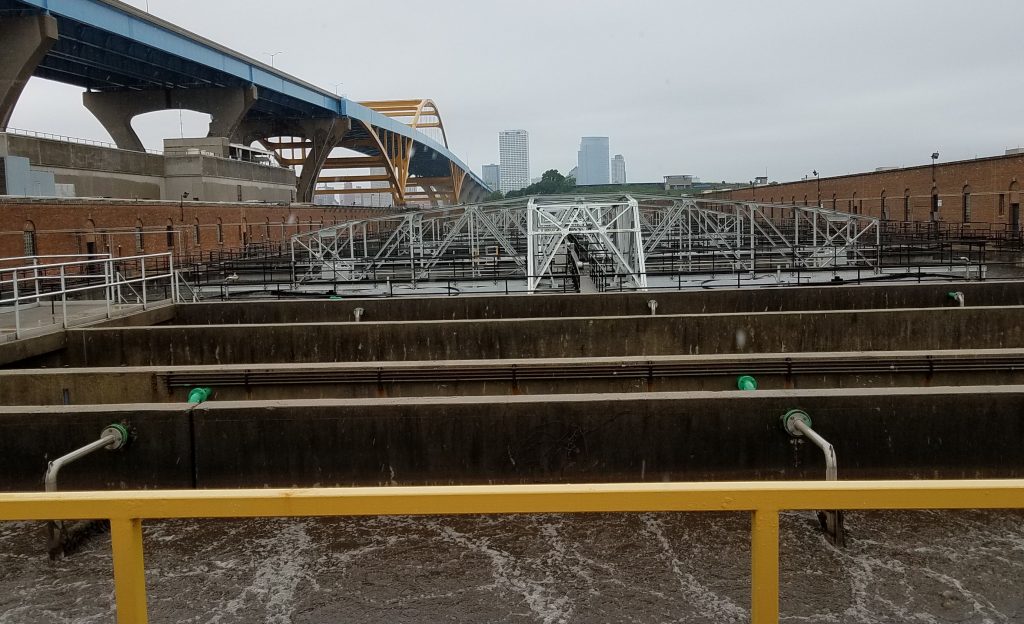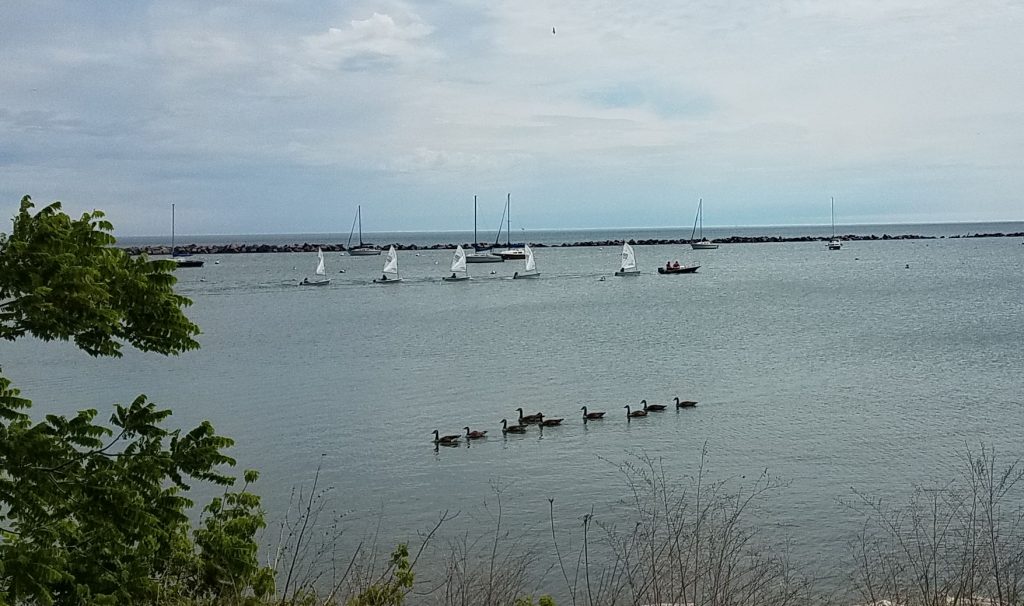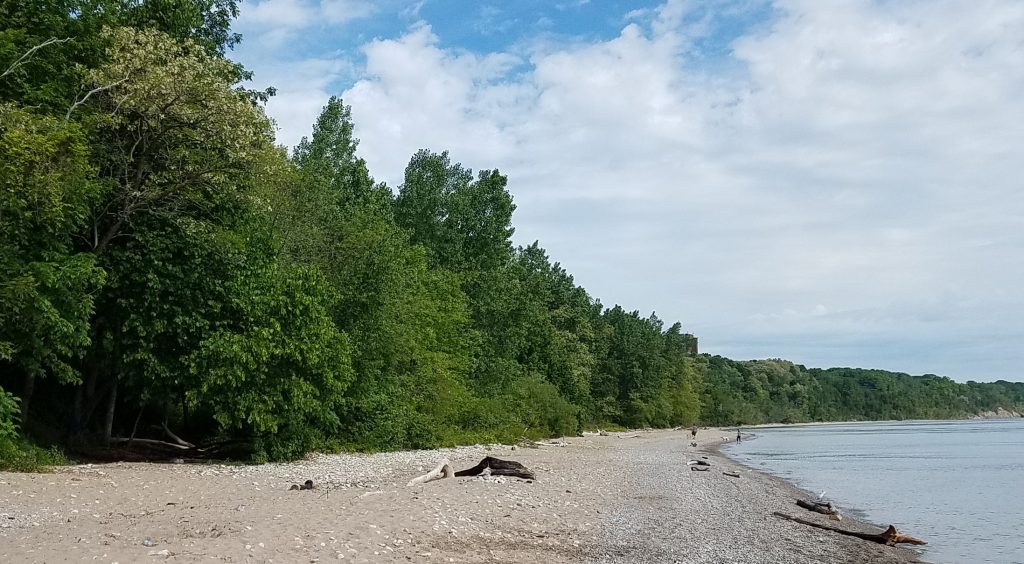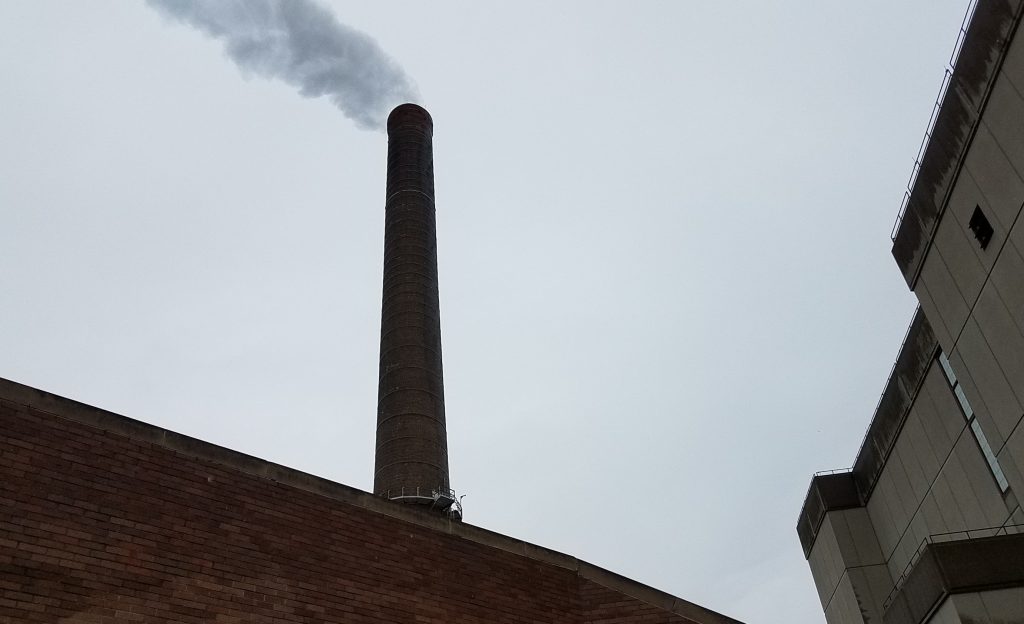
You didn’t need a weather vane or even to hold your finger to the wind to know which way the wind was blowing when we lived near Lake Michigan in Milwaukee. An east wind blowing in from the Lake brought relief from the heat of summer, but the price was the smell. We lived less than a mile from Lake Michigan and from the Milwaukee sewage treatment plant. It is better now than it was when I was a kid, but I still thought it might be interesting to see the place we had so often smelled by never saw close up. So with my sister, Christine Matel Milewski, and cousins Mary Karshna Robertson and Dick Karshna, we went to look at the plant.
When it was built in 1926, the sewage treatment plant was one of the best in the world. It still is. Some of the original tanks and facilities are still working.
A big challenge for the sewage plant is that Milwaukee originally had a combined sewer system. That means that rain water that runs into storm sewers mixes with sanitary sewer that run from toilets and drains. In 1926 this made sense. The cleaner storm water periodically flushed out the system. The cost was that when storms were severe, there was too much to process. One inch of rain over the area covered by the sewer system. drops 7.1 billion gallons into the system. The excess went out into Lake Michigan, partially treated.
Milwaukee addressed this problem in 1994 by building tunnels deep under the city. During big storms, the water is shunted into the tunnels and processed when there is capacity. Partially treated water is sometimes still discharged. The woman at the sewage plant said that it had been almost two years since this last happened. Ironically, I just saw on the news that the sewers had backed up today. We had a couple inches of rain in a short time, following a lot of rain yesterday.
I was also interested in biosolids. We have used them on the tree farms, but they are hard to get. Milwaukee makes fertilizer out Milwaukee’s crap. Milorgranite is very well processed so that it can be used even on food crops.
The sewage process also produces methane, which is used to run the plant.
When the water is discharged into Lake Michigan, it is 98% clean. Not sure what that means exactly, but it is clean enough. The area around the discharge is full of sea birds because it is attractive to fish. What the fish like it the highly aerated water.
The pictures show the process. Sewage is first filtered by screens. Lots of stuff finds its way into the sewers, things like shopping carts, mobile phones and even bowling balls. These are taken to landfills. Next they filer our coarse materials like sand and grit. It then goes into settling tanks, where settling materials are removed at the bottom, while grease and soaps are skimmed off the top as they float on top of the water.
After that, the water goes into digester, where microorganism literally eat the sewage. These are also aerators. Lots of air is pumped in to give the microorganisms a little help. The microorganisms live for only 7-10 days. They spend their short lives eating & reproducing. They settle to the bottom when they die, where they are processed into Milorgranite. The progeny are recycled into the next batch. Milwaukee put in the first microorganisms in 1926 and the community has been in business ever since. The microorganisms are hard working employees. After the microorganisms are done, the water is chlorinated to kill any pathogens that somehow made it through. Then the chlorine is neutralized and the water discharged into Lake Michigan.
First picture is the skimmer, followed by the digester. Picture #3 show some of that rain that overwhelmed the system. Next is Lake Michigan south of the plant. You see a group of geese going one way and a group of boats towed in the other way. Last is a Lake Michigan vista looking north.





